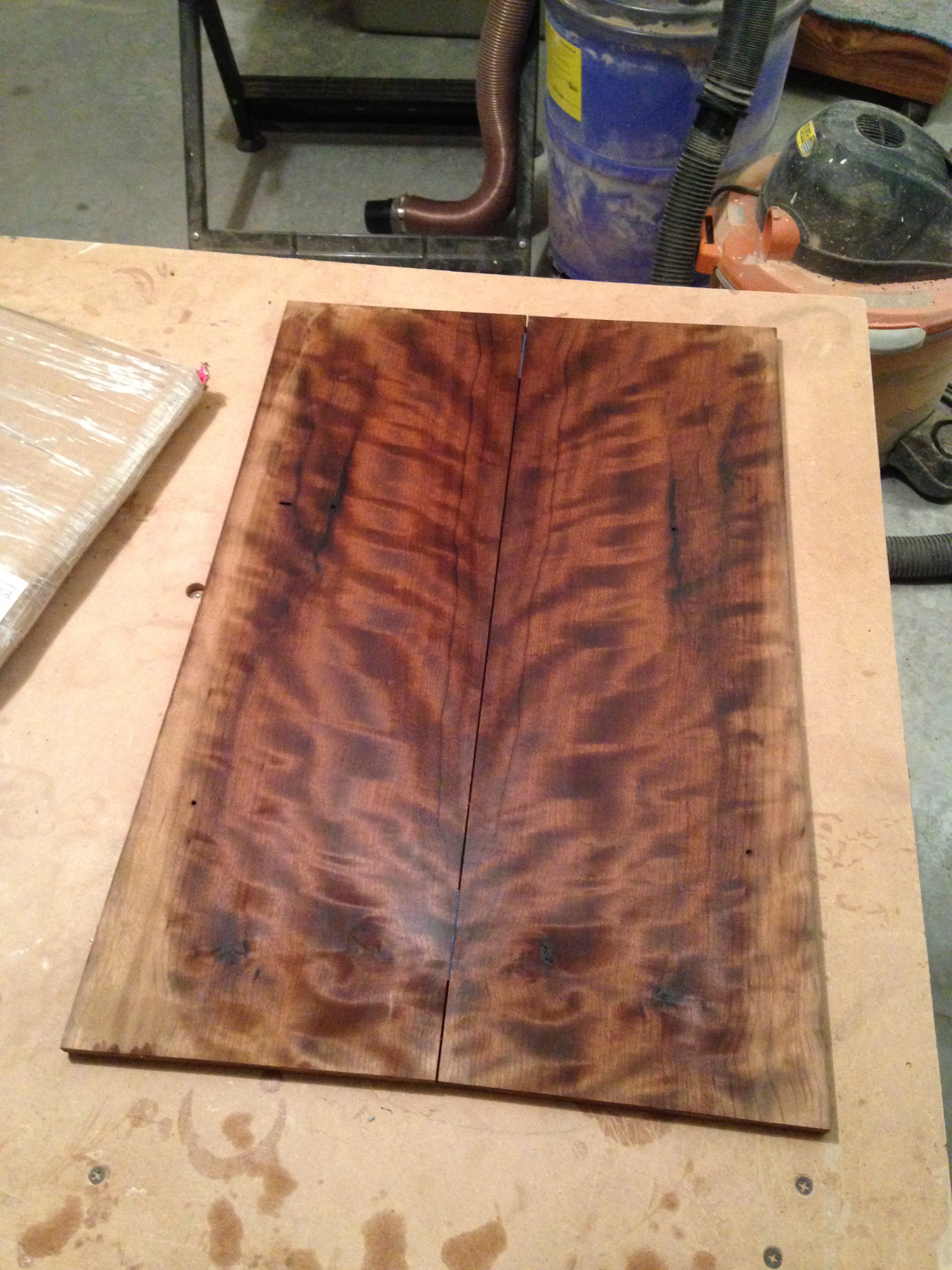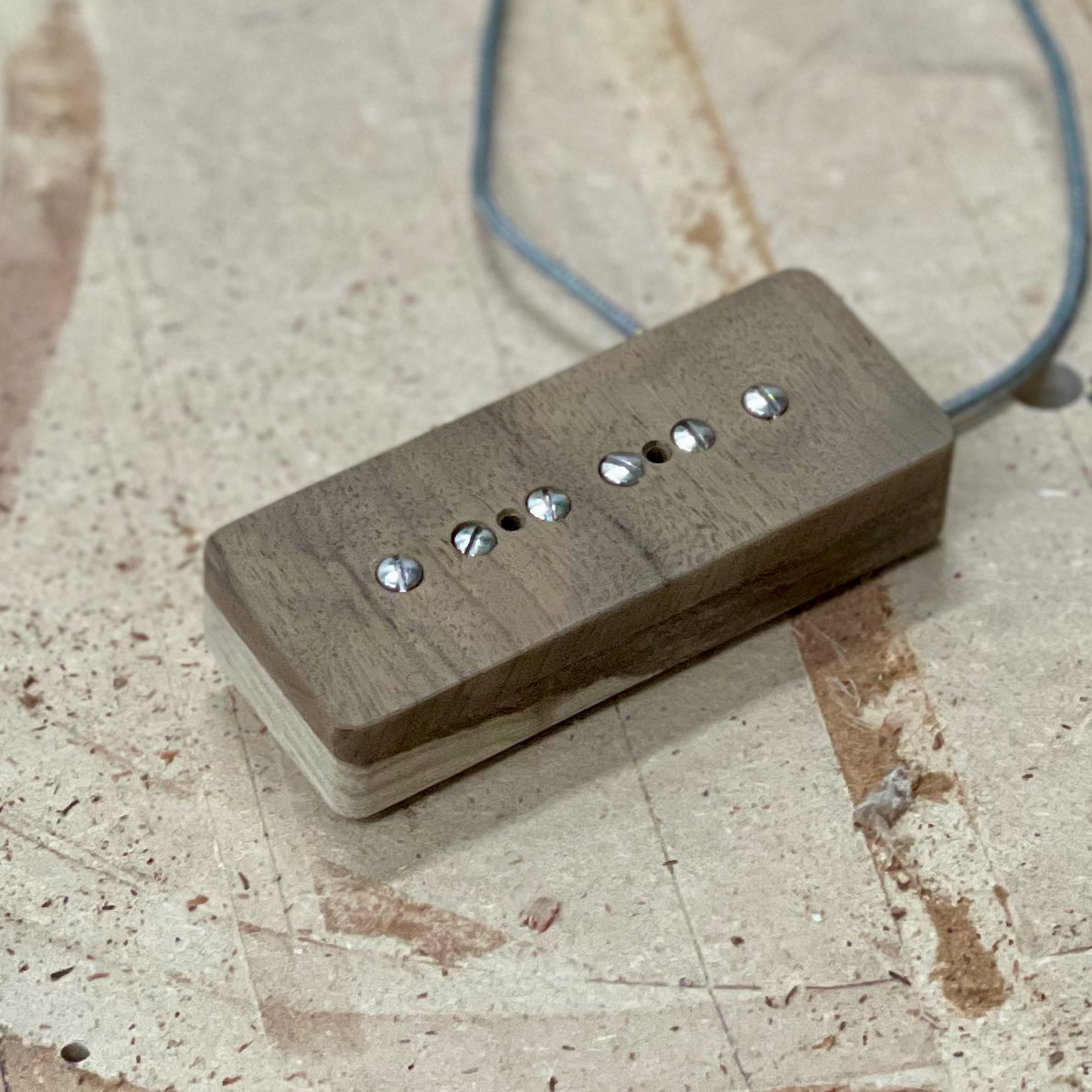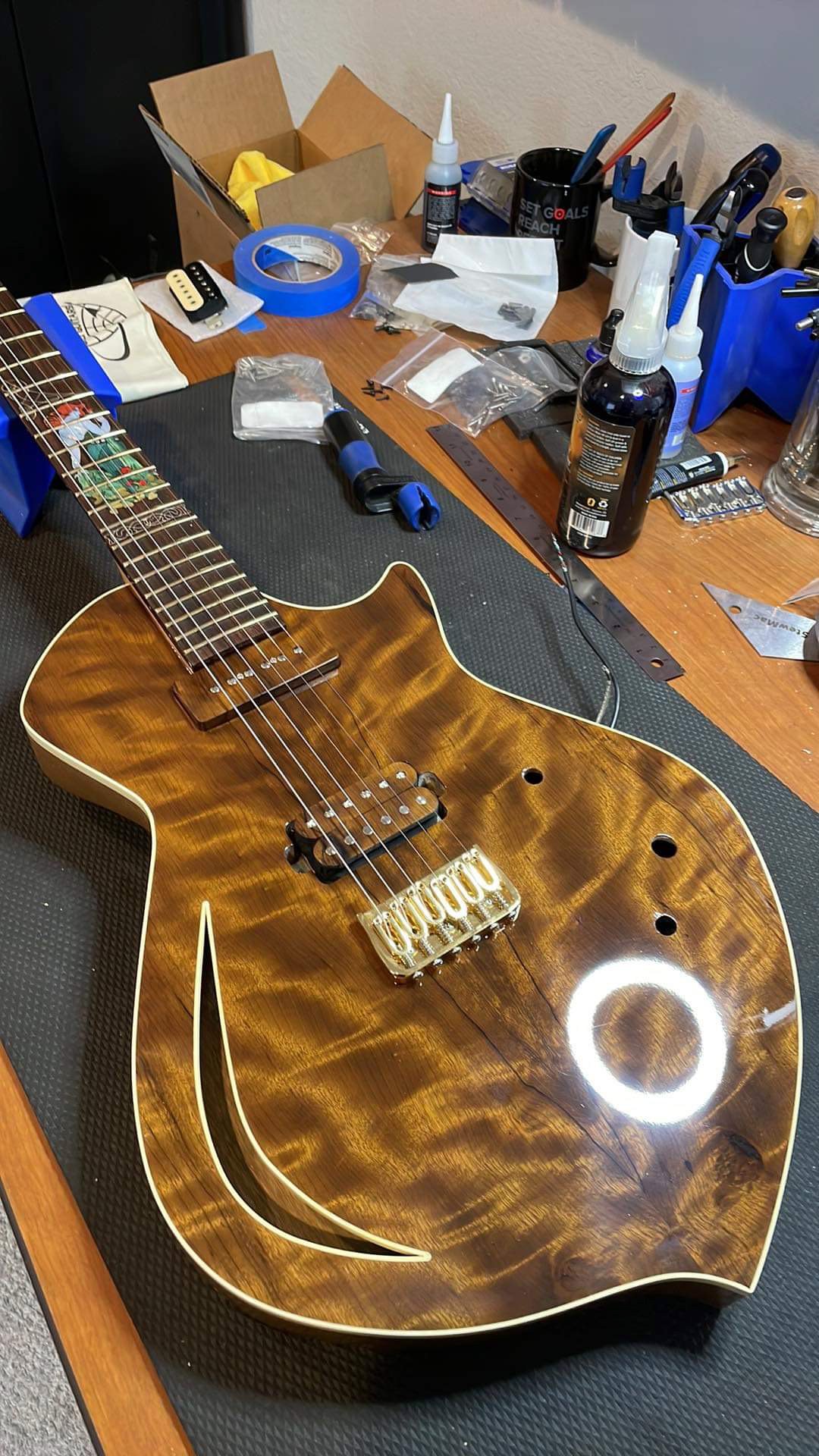The story behind the build: Mucha inspired '71 Limited
Generally, a social media post isn’t the best place to discuss something in any kind of depth, so I’d like to use this platform as an opportunity to share stories about builds that deserve a little more than some words and a few hashtags.
The story of this build begins in early 2014. While teaching a build class, Pat (one of the participants) asked if I’d mind setting aside a flamed Imbuia top for use in a build for him. I didn’t have any plans for it, so I was happy to oblige. Over the years, Pat has become a great friend and supporter of Sully Guitars, and from time to time, we’d try to figure out exactly what we were going to do with this top.
In the summer of 2021, Pat decided that he was ready to move forward, and I was honored that he chose the ‘71 as the model for this build. He also had the idea that the build would include an intricate inlay inspired by the work of the artist Alphonse Mucha. Pat wanted to have the work done by renowned inlay artist Larry Robinson, and I was excited to make this happen. I’d also be lying if I said I wasn’t super nervous about messing up the lovely artwork during the entire build process.
This was going to be a very special build for a very special client. Naturally, I still had the Imbuia top (actually two from the same billet), but I also had one body blank of one piece Black Limba that I’d been holding on to since 2014. This is significant in that it was the last piece from a board I had used to build Pat a guitar a few years prior. We decided on maple for the neck shaft, and I suggested using some curly maple that I received from Mike Shannon, Principal Master Builder of the Jackson Custom Shop. I hold Mike and his work in the highest regard, so I wanted to use some wood from that stash for this build. The specs came together pretty quickly, but I also added a few things that he hadn’t thought of, such as chambering out the body and adding what I call a WTF hole in the top. We agreed to leave the binding off of the neck and headstock, but add it to the body. I mentioned that there would probably be enough material to match the headstock to the body, and Pat shared that if there was enough material he’d like to have the control cover also be made from Imbuia “although I know you’re not a fan of this sort of thing.” He’s right, but I wasn’t going to say no.
We had the basic idea for the specs, so I got to work. Let’s get to the photos, shall we?
NOTE: Be sure to mouse over the bottom of the photo when its open, as you’ll get a bit more info.
The basic machining was done, and the fretboard arrived from Larry’s shop. Before I glued the fretboard to the neck shaft, I thought a bit more about the build and if there were ways I could step things up a bit. I wanted to add some subtle details to the neck that would complement the intricate inlay. It’s not that I felt the guitar was plain, per se, but with the exception of the inlay, most of what’s been done so far is along the lines of what I’ve already done, or what I’d normally do. I felt that this build needed a little more.
Earlier in this article, I mentioned that I had a second top from the same billet (board); I used some of it for the headplate and what would become the control cavity cover, but I didn’t stop there. I decided to thin some of it out and with some redwood burl, I made a laminated back strap for the headstock. I thought the color of the redwood burl would be a nice compliment to the olive and brown tones to the Imbuia, and I also added a sliver of it between the fretboard and the neck shaft. It’s super subtle; kind of an “if you know, you know” detail. I also suggested using gold EVO fret wire; I’m generally not a fan of a bunch of gold all over, but since the guitar was already going to have gold hardware, it seemed like a nice way to continue the color palette instead of using our standard choice of stainless steel fret wire. After sending a mockup to Pat, he agreed, and we went with it. Once the neck was fretted, shaped, and sanded, I sent a couple of photos and decided that would be the last batch of progress pictures I’d send. Don’t get me wrong; I love keeping clients informed and updated, but I started to see the finish line, and while it’s cool to get pictures along the entire process, I felt it was more fun to keep the extra details (some which I have yet to mention) to myself and not ruin the surprise, ya know?
More pics? Let’s do it.
At this point, the neck is glued in and in the paint booth. I thought that a Nitrocellulose Lacquer finish might be nice, so we went with that. We use nitro from time to time, and I dunno, it just seemed like the way to go. Once the finish work was done, it was assembly time. I’m gonna be straight with you, here; there were a few aspects of this build that stressed me out. I always do my best with every guitar I build, but I know that things happen, and I wanted to keep Murphy out of the shop, so to speak.
This guitar was to have a humbucker in the bridge position and a P90 in the neck position, and we went with black bobbins, which I wasn’t 100% sold on, but I figured I’d wait until I had it in front of me and could mock things up. If it was going to have dual humbuckers, I would have gone with a zebra configuration, because everybody knows zebras are like bacon; they make everything better. When I was beginning the assembly process, it was very, very clear to me that black bobbins were NOT the answer.
The answer lied in one of the cutoffs from the body; make a P90 cover from that material. Okay, fine, I can do that (and that was nerve wracking), but we don’t make wood bobbins for our humbuckers.
But my friend Adam at Elysian Pickups does. Adam is an old friend (we met at a day job we both had in the late aughts), and if I was going to involve someone from another company in a project this special to me, it was going to be a friend. I had plenty of cutoffs from the second Imbuia top, so I sent them to him to make bobbin tops. It turns out that he had just come up with a new pickup model, so it seemed fitting to put that into this guitar.
I was a little unsure of how it was going to look; I have to say that whenever I’ve seen a guitar that’s just WOOOOOOOOOOD everywhere, it’s not really been my thing. I think that you need a balance of constrasting colors and textures. When I completed the assembly, I thought it worked better than the original plan, especially considering the control cavity cover (and truss rod cover) were all from cutoffs from the build, and I think it added a thread of continuity. Then again, I’m biased.
The pickup arrived from Adam and looked fantastic. I was relieved, but also cautious, as I know that Murphy can strike at any time. The other guys in the shop were also apprehensive to do anything other than look at it, which I completely understood. Hell, until I knew it arrived safely, I was nervous that something was going to happen to it.
Earlier in the year, I had custom ‘71 cases made by G&G and since we still had some Imbuia left over, I figured it’d be a nice touch to laser etch a badge for the outside of the case.
The guitar was complete and ready to ship. Pat lives a few hours away, and I was relieved knowing it wasn’t going to be on a truck for very long. Thankfully, it arrived safely, and I got an incredibly sweet call from Pat. It was an absolute honor to build, and I hope it serves him well.
There are a few builds that come along and push me out of my comfort zone. This is a build that I’ll never forget and am very grateful for. Guitar building is a mix of inspiration, sanding, and problem solving, and this build was no exception. I know that Sully Guitars are often sparkly, pointy, and fun, but there is (I hope) a bit of refinement in that. A lot of times, we make guitars that I feel give their owner a little permission to be a little more extra than they feel they might be. It’s not often when I get a chance to stretch out a bit and show the more refined side of what I think Sully Guitars can be, and I’m very grateful for those moments, too.
Thanks for reading, and I hope you’ve enjoyed the story behind the build.
Sully





























